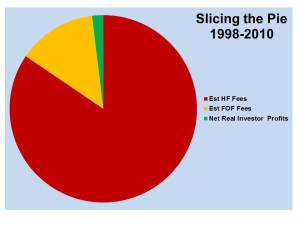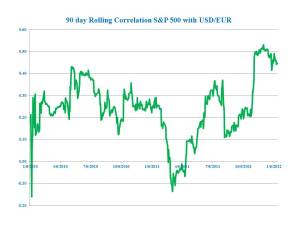As I’ve watched the ongoing saga in Europe, the discussions of sustainable Debt:GDP and other elements of the “Maastrict Criteria” I’ve often been puzzled at why these figures were so important. The U.S. represents a large single currency union, and although different states have incurred different levels of indebtedness there is no Federal law dictating what those equivalent ratios must be. Most states are required to run balanced budgets, but those laws are passed by the states themselves.
So although many commentators repeat the mantra that too much borrowing by a few profligate countries is endangering the entire Euro-zone, and this sounds as if it makes sense, I’ve never fully comprehended the precise linkage. Why shouldn’t countries in a common currency (or even cities for that matter) be allowed to borrow whatever they wish at prevailing market rates? Municipalities do go bankrupt in the U.S. (though far less frequently than Meredith Whitney once forecast). Orange County defaulted in the 1994 because of speculative interest rate bets gone awry, and nobody questioned the viability of the US$. In 1975 the Federal government was willing to let New York City go bankrupt (although President Ford did not tell NY to “drop dead“, as is popularly believed). But at no time was there any question about the viability of the US$ or the single currency area.
So I’ve been somewhat uncomfortable with the accepted wisdom that a fiscal union is necessary for a currency union to work. Fiscal transfers do take place in the U.S. on a far greater scale than in Europe, but not in response to local deficits but to growth shocks.
Then I came across an academic paper called “Target Loans, Current Account Balances and Capital Flows: The ECB’s Rescue Facility“. It’s quite technical and I can’t claim to fully grasp its many nuances. However, the main insight is in the following example: an Italian buying a BMW car from Germany writes a check in Euros drawn on an Italian bank. This results in a series of transactions from the Italian bank to the Bank of Italy, ECB, Bundesbank, German bank and BMW. The Italian buyer obtains his car. The Bank of Italy has a liability with the ECB, and the Bundesbank has an asset. The key point is that these balances, while they offset at the ECB, never have to be settled. Italy has been running a growing trade deficit (hence the discussion of improving southern European competitiveness) while Germany has been running a surplus (because it is already an exporting powerhouse).
Germany, through its Bundesbank, has an “asset” or claim with the ECB of 450BN Euros (as of September 2011). All the Eurozone members net out, but the imbalances have soared since the 2008 debt crisis. They are called “Target” balances, and according to the paper are obscurely reported by the ECB, only disclosed in footnotes. Germany’s loan to the ECB is guaranteed by the other Eurozone countries, but if one was to leave (say, Greece) they may default on their pro-rata share. In this way, Germany is already on the hook to its Eurozone partners for 450BN Euros (and presumably growing).
These imbalances are caused by the fiscal deficits southern European countries have been running, which is why the Maastricht Treaty imposed a 3% deficit:GDP limit and a 60% debt:GDP limit. The architects of the Eurozone payments system understood this. But the debt owed Germany by the ECB is substantial, not widely reported, and fundamental to the crisis.
In the U.S., a Texan buying a Caterpillar earth mover from a California factory would trigger the analogous payments sequence through his regional Federal Reserve bank. However, the Dallas Fed would have to settle its deficit with the San Francisco Fed within a year by transferring government securities. This critical “true-up” doesn’t exist in the Eurozone.
It’s a complex topic, but I found Target Loans, Current Account Balances and Capital Flows: The ECB’s Rescue Facility helpful. It helps show why Germany doesn’t necessarily want Greece to leave the Euro, and how its break-up could uncover some substantial debts. So the risk of a Euro disaster is extremely low, since it’s not in anyone’s interests. But the growth outlook is correspondingly extremely poor, which should cause the Euro to depreciate. We continue to own EUO so as to be short the Euro in combination with being long risky assets such as equities (SPY).


